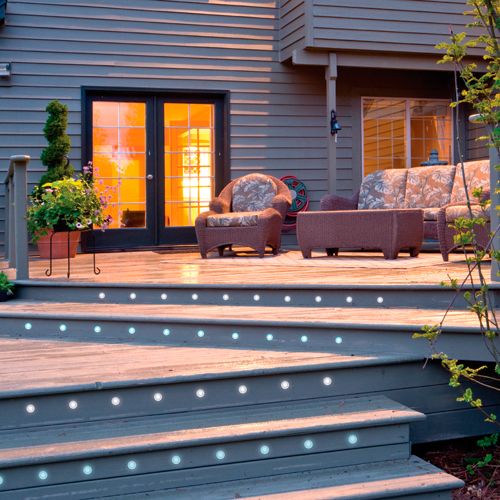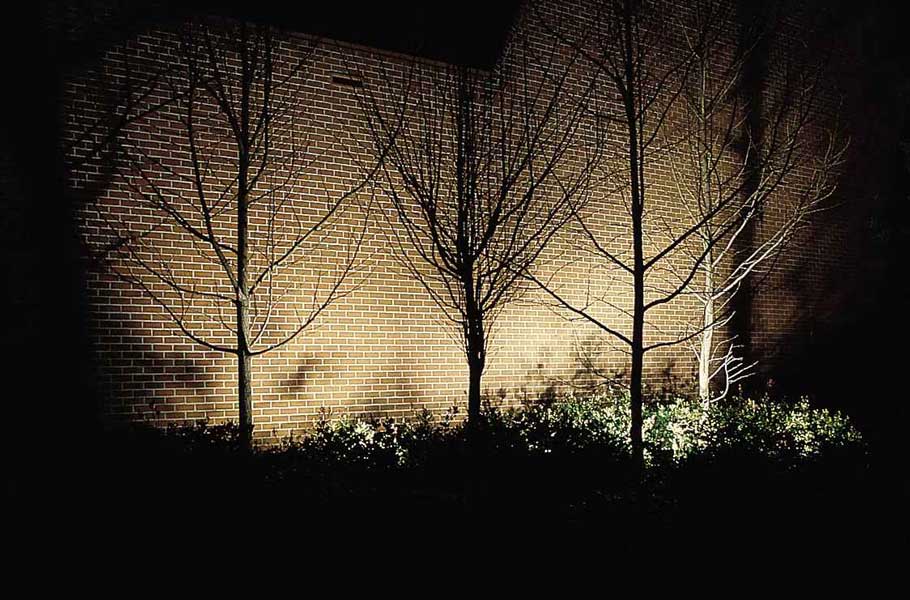Make your garden a spectacle with LED Outdoor Lighting
Posted by Amit Soni on 26th Oct 2011
Forecasts have promised some excellent weather over the course of the next week with temperatures reaching 20 degrees in some parts of Britain.
This couldn’t have come at a better time with the half-term break in full swing and as it may be the last unseasonably mild weather for Britain this autumn it is well worth taking advantage of it now. According to The Huffington Post, most people will be making the most of the weather with a ‘staycation,’ literally meaning a ‘stay at home’ vacation.
So if you have a garden now is the time to use it, but you shouldn’t neglect to light it properly, especially as the evenings are becoming shorter. If you want to avoid your garden guests treading through the flower beds or if you just want to make your garden look the night time spectacle it deserves to be then follow our simple advice on outdoor lighting.
Why is it worth using LED for your outdoor lighting? There are few reasons. The most obvious is to take advantage of their great energy savings and long life span. A bulb that has to be changed less frequently is ideal for outdoor lighting as maintenance can be quite a chore. Less obvious however, is that LED lights are more suitable for lighting outdoor areas because they are capable of producing much brighter light compared with traditional bulbs and lamps.
"Outdoor lighting is primarily designed to increase visibility at night. Due to their brightness, LED lights make gardens much safer and secure to walk around as their light can penetrate further."
There are plenty of options available when it comes to choosing what type of outdoor lighting to use. Some of the most popular forms of outdoor lighting are wall mounted floodlights, but these aren’t always the most effective or stylish way to incorporate outdoor lighting into your garden.
Floodlights can really distract attention from the beauty of your garden and are actually quite blinding.A more stylish option is to adopt landscape lighting that adds detail and emphasis to certain features of your garden, but without drawing attention away.
Pathways, shrubs, trees or other features of your garden are prime targets for accent lighting. Recessed floor lights are particularly popular because of their discrete design.
These are already used to add fashionable lighting to the pavements in up market shopping streets and they can achieve the same great effects outside your house as well.
Use them to illuminate narrow pathways so they are easier to follow in the evening or to define the boundaries of your flowerbeds so you don’t accidentally trample your primroses.
Outdoor lighting is also great for accenting particular features of a garden, so if you have a statue, water feature or good looking bushes, don’t forget to keep them well lit on an evening. In this case you might want to choose outdoor lighting that is more directional as this will open up a few more options for creating a beautiful finish.
There are a couple of lighting techniques which are quite popular. Objects such as trees and bushes can be either silhouetted, highlighted or moonlighted. This is obviously where directional lighting really comes into its own.
Up lighting is particularly effective at making trees look stunning on an evening. Low lying lights are also a great addition to rockeries and flower beds as the light they produce will wash over these features with quite attractive results.
If you have patio spaces or decking you might want to consider how you light up theses spaces. These are areas which you will want to make atmospheric as your garden guests are likely to wine and dine here on an evening. Decking is perfect for accommodating recessed lighting so have a play around.
What you will find is that recessed lighting creates much more subtle illumination, but will be just as adequate as flood light illumination. People have a tendency for choosing the latter, without realizing what an effective combination of form and function recessed lighting achieves.
You might also want to try suspended lamps, which will provide soft, eye level illumination that isn’t too overpowering. Finally, use wall splash techniques to maximize the amount of light produced by a single upward facing bulb. Rather than being lost in the night sky the light will bounce back of the wall and warm up its immediate surroundings.
Choosing how to run your outdoor lighting is equally important. Running your outdoor lighting on solar energy is an obvious choice for prudent energy savers. Your lights will charge during the day and then give you great lighting on an evening.
"LED Lights are a perfect partnership with solar technology due to their low wattage requirements. This means they will get the most out of the sunlight that is stored."
The best thing about solar lights is their installation. They can be stabbed straight into the dirt without any need for wiring. If you do want to opt for a wired system make sure you get recommendations from a professional electrician before you start.
Outdoor lighting is not just for making your garden look pretty on an evening. They also serve an important role in making your home secure. Well lit gardens and house exteriors are a key deterrent to unwanted visitors. To make the most of your outdoor lighting in this capacity you may consider using strategically placed motion sensors.
There are a wide range of IP rated casements available for outdoor lighting which will keep your electrics protected from the elements.
Follow our advice on outdoor lighting and you will end up with a garden that is the envy of the neighborhood. This couldn’t be too soon as fireworks night is just around the corner.







